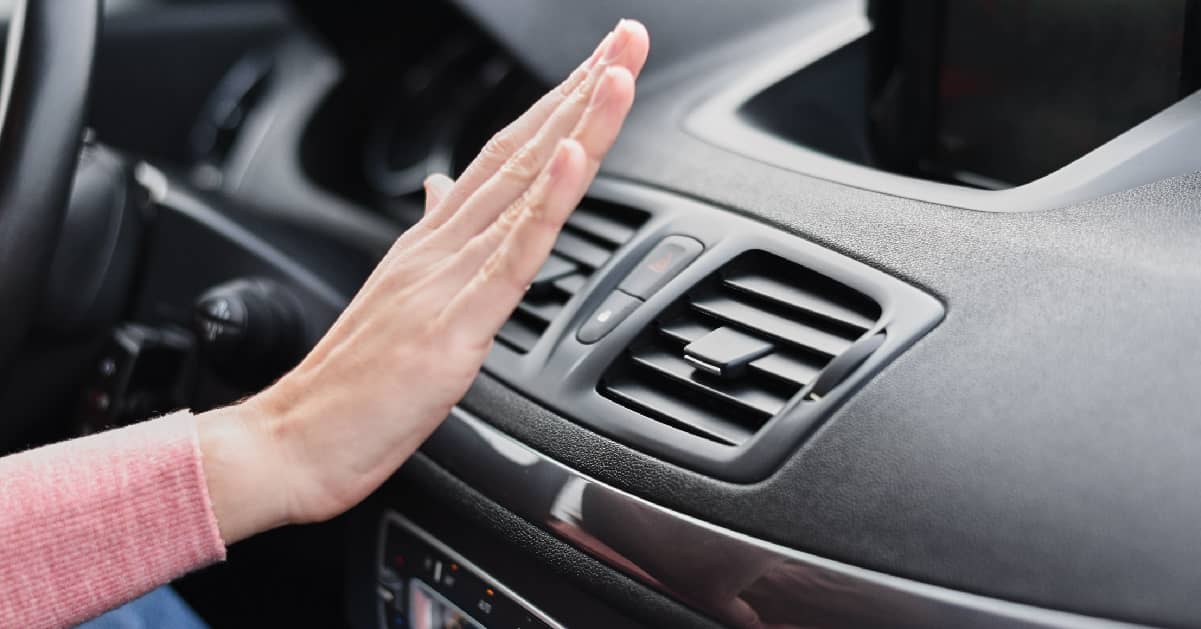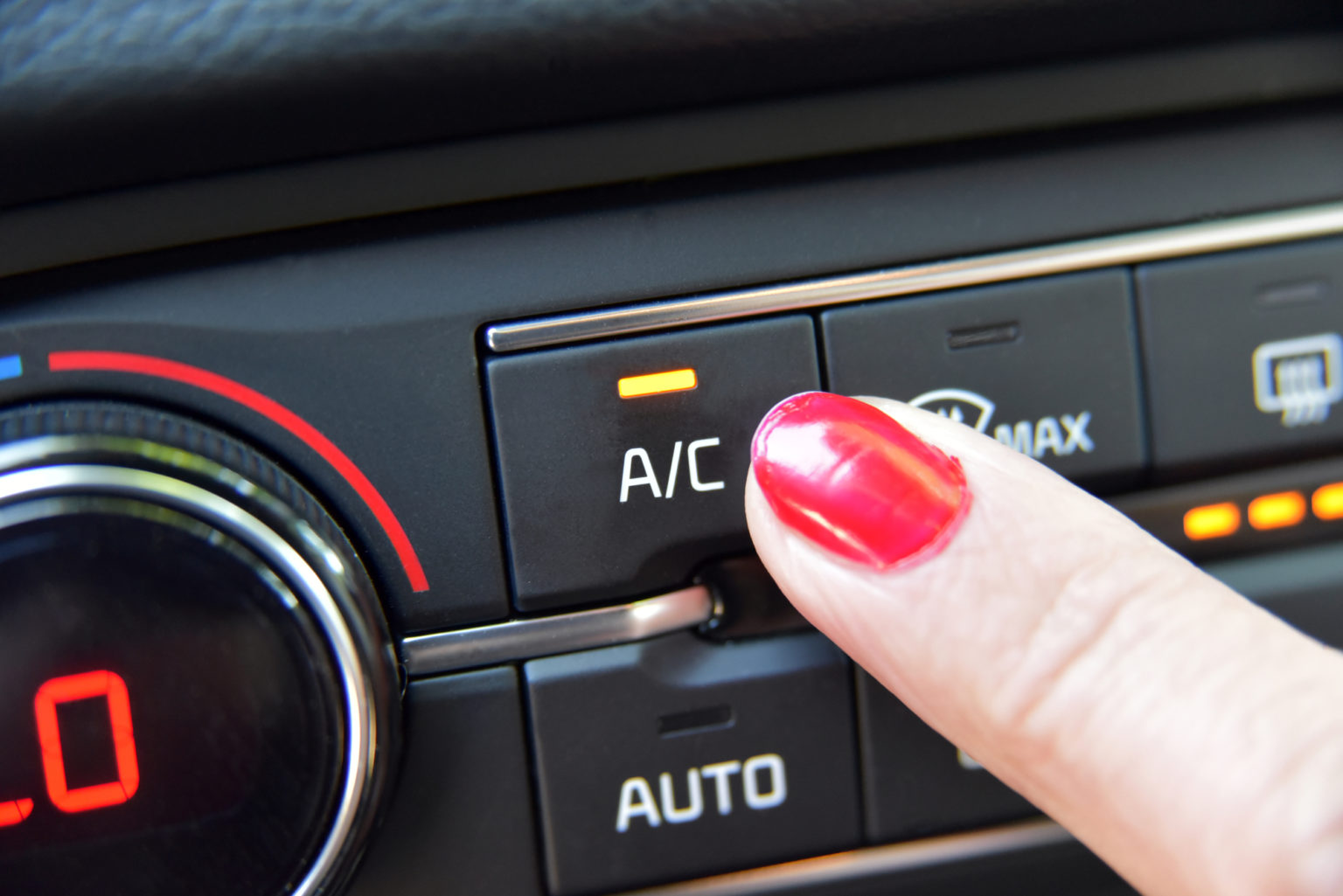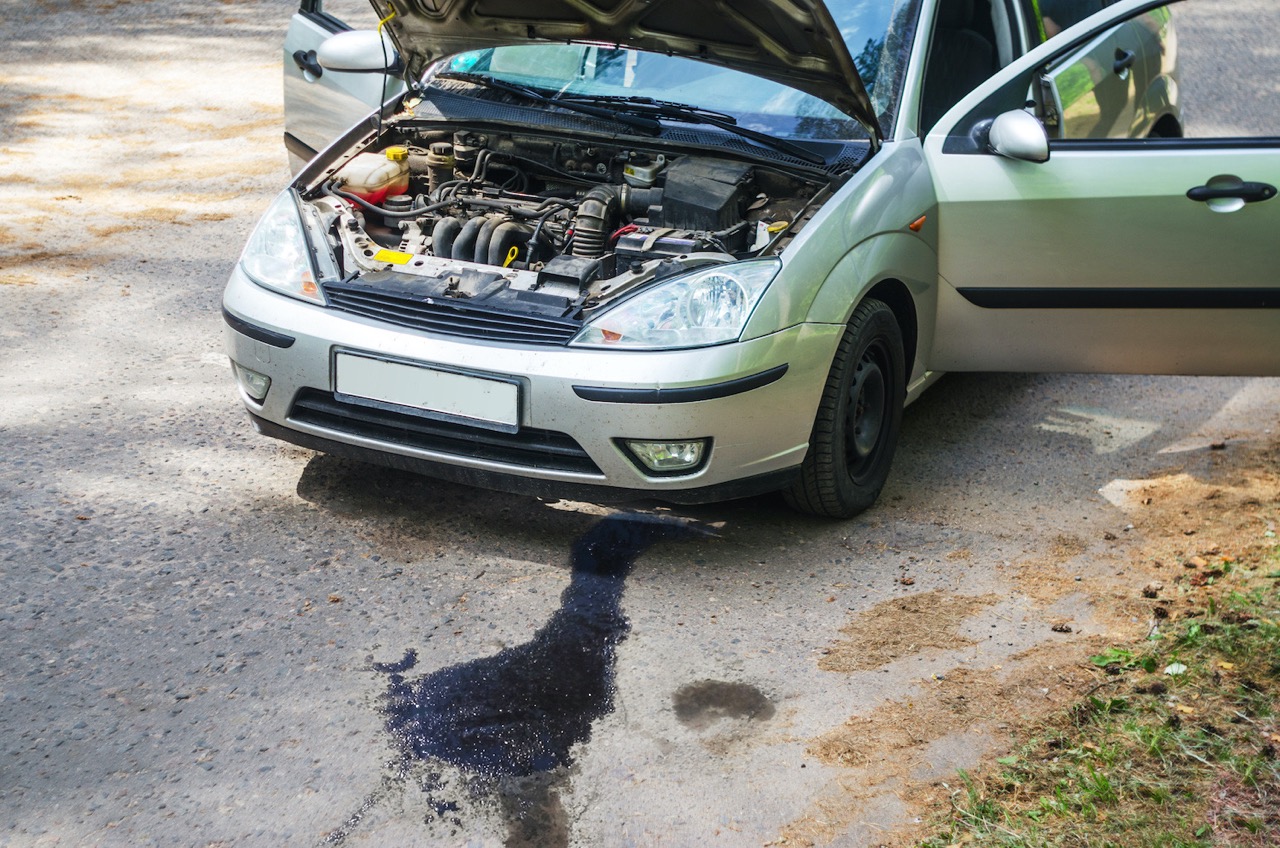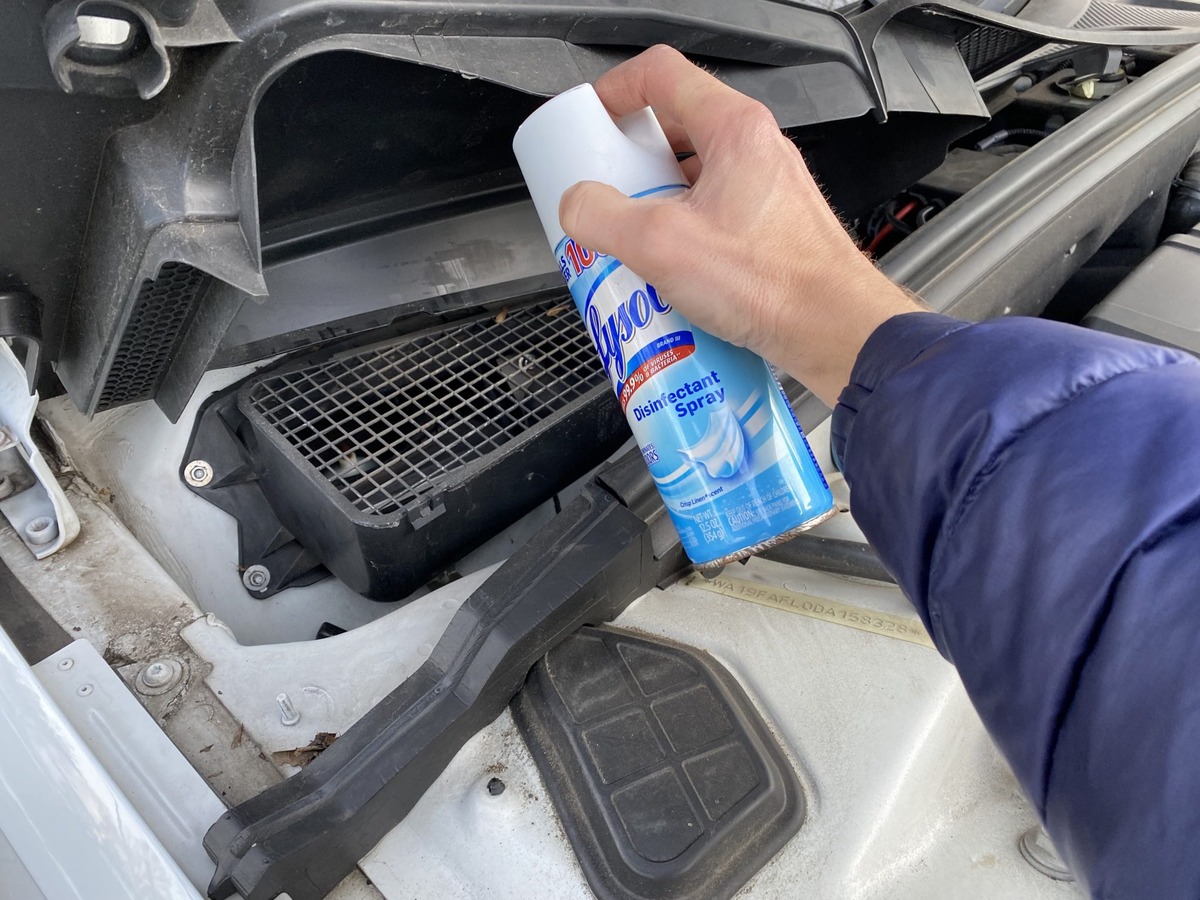

Articles
Car Smells Like Burning Rubber When AC Is On
Modified: May 6, 2024
Discover articles about why your car smells like burning rubber when the AC is on. Find out the causes and solutions for this common issue.
(Many of the links in this article redirect to a specific reviewed product. Your purchase of these products through affiliate links helps to generate commission for Storables.com, at no extra cost. Learn more)
Introduction
There’s nothing quite as alarming as driving your car and suddenly being hit by a pungent smell of burning rubber, especially when your car’s air conditioning (AC) is turned on. Not only is it an unpleasant odor, but it can also signify a potential issue with your vehicle that needs to be addressed promptly. Understanding the causes of why your car smells like burning rubber when the AC is on can help you diagnose and resolve the problem before it escalates.
A burning rubber smell often indicates a problem with the heating, ventilation, and air conditioning (HVAC) system of your car. The AC system consists of several components, including belts, hoses, the AC compressor, and various electrical connections. A malfunction in any of these components can lead to an overheating or burning rubber smell. To effectively address this issue, it’s important to identify the underlying cause. Let’s explore some of the common reasons why your car might emit a burning rubber odor when the AC is in use.
Key Takeaways:
- Addressing the burning rubber smell from your car’s AC requires inspecting belts, compressor, hoses, insulation, and electrical components. Regular maintenance is crucial to prevent future issues and ensure a safe driving experience.
- Promptly diagnosing and fixing the burning rubber smell from your car’s AC can eliminate the unpleasant odor and ensure the efficient operation of the system. Seeking professional assistance for complex repairs is essential for safety and reliability.
Read more: Car Smells Like Gas When AC Is On
Common Causes of Burning Rubber Smell While AC Is On
When your car’s AC is on and you smell a burning rubber odor, it’s essential to determine the cause to prevent further damage to your vehicle. Here are some common reasons why your car might emit a burning rubber smell:
- Overheated Belt: One possible cause of a burning rubber smell is an overheated belt. The AC system relies on a belt to drive the compressor that produces cool air. If this belt becomes worn, loose, or damaged, it can generate excessive heat and emit a burning rubber odor.
- Malfunctioning AC Compressor: Another potential culprit is a malfunctioning AC compressor. The compressor is responsible for pressurizing and circulating the refrigerant to cool the air. If the compressor is faulty or seized, it can cause the belt to overheat, resulting in a burning rubber smell.
- Worn Out or Loose Hoses: Damaged or loose hoses in the AC system can also lead to a burning rubber smell. Over time, hoses can deteriorate or develop leaks, causing hot coolant to escape and come into contact with nearby components, resulting in a distinct odor.
- Burning Insulation: In some cases, a burning rubber smell may be caused by insulation material coming into contact with hot engine components. Over time, the insulation around wires, hoses, or other parts of the AC system can degrade or become dislodged, leading to a burning odor.
- Electrical Issues: Faulty electrical connections or components in the AC system can create a burning rubber smell. When wires overheat or insulation wears down, it can lead to electrical malfunctions, emitting a distinct odor.
It is crucial to address the root cause of the burning rubber smell to prevent further damage to your vehicle. Ignoring the issue or continuing to use the AC system may lead to more severe problems and potential breakdowns. In the next section, we will discuss how to diagnose and fix the problem effectively.
Overheated Belt
An overheated belt is one of the common causes of a burning rubber smell when the car’s AC is on. The AC system relies on a belt to drive the compressor, which is responsible for cooling the air that enters your vehicle’s cabin.
If the belt becomes worn, loose, or damaged, it can slip on the pulleys instead of gripping and driving them efficiently. This slippage generates excessive heat, leading to a burning rubber smell. Also, if the belt is too tight, it can put additional strain on the components, causing them to overheat.
To diagnose whether an overheated belt is causing the burning rubber smell, you can perform a visual inspection. Turn off the car and open the hood. Locate the AC compressor, which is typically driven by a serpentine belt connected to the engine’s crankshaft. Ensure that the belt is properly aligned, tight, and free of cracks or signs of wear. If you notice any issues, it may be necessary to replace the belt.
In some cases, the tension of the belt might be too loose or too tight, leading to overheating and the burning rubber smell. If you’re unsure about the belt tension, consult your car’s manual or seek assistance from a professional mechanic. They can adjust the tension to ensure optimal performance and prevent further overheating issues.
Regular maintenance, such as inspecting and replacing the AC belt according to the manufacturer’s recommendations, can help prevent the belt from overheating in the future. Ensuring that the belt is properly tensioned and in good condition will not only eliminate the burning rubber smell but also optimize the overall efficiency and lifespan of your car’s AC system.
Malfunctioning AC Compressor
A malfunctioning AC compressor is another potential cause of a burning rubber smell when the car’s AC is running. The AC compressor plays a crucial role in the cooling process by pressurizing and circulating the refrigerant throughout the system.
If the AC compressor is faulty or seized, it can put excessive strain on the belt connected to it. This can result in the belt slipping and generating heat, leading to a burning rubber smell. Additionally, a malfunctioning compressor may not be able to properly regulate the flow of refrigerant, causing the system to overheat and emit the distinct odor.
To diagnose a malfunctioning AC compressor, start by turning off the car and inspecting the compressor visually. Look for any visible signs of damage, such as leaks, cracks, or loose connections. If you notice any issues, it is best to consult a professional mechanic who can further investigate and determine the extent of the problem.
Repairing or replacing a malfunctioning AC compressor usually requires specialized knowledge and equipment. It is not a recommended DIY task unless you have experience working on automotive AC systems. A professional mechanic can accurately diagnose the issue and recommend the necessary repairs or replacement.
Regular maintenance of the AC system, including checking the compressor and ensuring it operates smoothly, can help prevent a malfunctioning compressor and the associated burning rubber smell. Keeping the system clean, addressing refrigerant leaks promptly, and following the manufacturer’s recommended maintenance schedule can extend the lifespan of the AC compressor and prevent costly repairs in the future.
Worn Out or Loose Hoses
Worn out or loose hoses in the car’s AC system can contribute to a burning rubber smell when the AC is in use. Hoses play a vital role in transferring the refrigerant and coolant throughout the system. Over time, these hoses can deteriorate, develop leaks, or become loose, leading to a distinct odor.
As the hoses wear out, they may crack, degrade, or develop holes. This can cause the coolant or refrigerant to escape from the system and come into contact with hot engine components. The contact between the hot surfaces and the leaking fluid creates a burning rubber smell.
If you suspect that worn-out or loose hoses are the source of the burning rubber smell, you can visually inspect them. Open the hood when the car is turned off and locate the AC hoses. Check for any signs of damage such as cracks, bulges, or visible leaks. Additionally, ensure that the hoses are securely attached to their respective connections.
If you notice any issues with the hoses, it is essential to address them promptly. Depending on the severity of the damage, you may be able to patch or seal minor leaks temporarily. However, for more significant damage, it is recommended to replace the affected hoses entirely.
Replacing worn-out or damaged hoses requires careful attention to detail and knowledge of the specific AC system in your car. If you’re not confident in performing the replacement yourself, it is best to seek assistance from a qualified mechanic. They have the expertise and tools necessary to ensure that the new hoses are installed correctly and that the AC system functions optimally.
To prevent future issues with worn-out or loose hoses, it’s crucial to perform regular maintenance on your vehicle’s AC system. This includes regularly inspecting the hoses for signs of wear or damage and addressing any issues promptly. Additionally, ensuring that the hoses are properly secured and tight can help prevent them from becoming loose and causing a burning rubber smell.
Burning Insulation
The presence of a burning rubber smell in your car’s cabin when the AC is on may be attributed to burning insulation within the AC system. Insulation material is commonly used to protect wires, hoses, and other components from heat and electrical interference. Over time, this insulation can deteriorate or become dislodged, leading to a distinct burning odor.
When insulation material comes into contact with a hot engine component or electrical connection, it can start to smolder or burn. This can generate the characteristic burning rubber smell. It’s important to address this issue promptly, as burning insulation can pose a fire hazard and also cause damage to the surrounding components.
To diagnose and address the burning insulation issue, you can start by visually inspecting the AC system under the hood. Look for any signs of damaged or exposed wiring, loose insulation, or areas where insulation may have melted or burnt. Take note of any areas where the smell seems to be concentrated.
If you discover damaged or burnt insulation, it is recommended to have it repaired or replaced by a qualified mechanic or electrician. They have the expertise to safely handle electrical components and ensure that proper insulation is restored. Attempting to repair or replace insulation yourself can be dangerous and may result in further damage or electrical hazards.
Preventing burning insulation is essential for the safety and optimal functioning of your vehicle’s AC system. Regular maintenance of the AC system, including inspecting the wiring and insulation for any signs of wear or damage, can help identify potential issues early on. If you notice any issues, such as loose or damaged insulation, it is best to have a professional address it to prevent further damage and potential safety hazards.
By taking proactive measures to maintain the integrity of the insulation within your car’s AC system, you can minimize the risk of burning insulation and ensure a safe and comfortable driving experience.
Electrical Issues
Electrical issues within the car’s AC system can also lead to a burning rubber smell when the AC is running. Electrical malfunctions can occur due to faults in wiring, connectors, or other electrical components. These issues can cause overheating and result in the emission of a distinct odor.
When wires overheat or insulation wears down, it can lead to electrical arcing or short circuits. This arcing or shorting can generate heat and cause the surrounding materials, such as plastic or rubber, to emit a burning smell. Additionally, loose electrical connections can create resistance, leading to heat buildup and a potential burning odor.
Diagnosing electrical issues within the AC system can be complex and requires specialized knowledge. However, you can start by inspecting the wiring and connectors visible under the hood. Look for any loose or frayed wires, charred or melted connectors, or signs of overheating. If you notice any issues, it is recommended to consult a professional mechanic or electrician who can accurately diagnose and repair the electrical problem.
Repairing electrical issues is best left to professionals, as they have the expertise and equipment necessary to safely handle electrical components. Attempting to fix electrical problems without the proper knowledge can be dangerous and may result in further damage to your car’s AC system or even pose a risk of electrical shock.
To minimize the risk of electrical issues and the associated burning rubber smell, it’s important to keep up with regular maintenance of your car’s AC system. This includes checking for any signs of wear or damage to the wiring, connectors, and electrical components. In addition, following the manufacturer’s recommended maintenance schedule and promptly addressing any electrical issues that arise can help prevent further damage and ensure the reliable operation of your car’s AC system.
By addressing electrical problems promptly and ensuring proper maintenance, you can eliminate the burning rubber smell and maintain a safe and efficient AC system in your vehicle.
Check the AC compressor and belts for any signs of wear or damage. A burning rubber smell could indicate a slipping belt or a failing compressor. Have it inspected by a professional mechanic to prevent further damage.
How to Diagnose and Fix the Problem
Experiencing a burning rubber smell when the car’s AC is on can be concerning, but by following the proper diagnostic steps, you can identify and fix the underlying issue. Here are the steps to diagnose and fix the problem:
- Inspect the Belts: Start by visually inspecting the AC belt. Look for signs of wear, looseness, or damage. Ensure that the belt is properly aligned and adequately tensioned. If necessary, tighten or replace the belt.
- Check the AC Compressor: Examine the AC compressor for any visible signs of damage, leaks, or malfunction. Check the connections and ensure that the compressor is operating correctly. If needed, consult a professional mechanic for further diagnosis and potential repairs.
- Examine the Hoses: Inspect the AC hoses for cracks, leaks, or loose connections. Ensure that the hoses are securely attached and in good condition. If any issues are found, repair or replace the hoses as necessary.
- Investigate Insulation Damage: Check for any burnt, melted, or loose insulation material within the AC system. Look for damaged or exposed wiring or components. If insulation damage is found, consult a professional to safely repair or replace the affected insulation.
- Address Electrical Problems: If you suspect electrical issues, such as overheating wires or loose connections, it is recommended to seek the help of a professional mechanic or electrician. They can accurately diagnose and repair any electrical problems to eliminate the burning rubber smell.
It is important to note that the steps provided are general guidelines for diagnosing and fixing the problem. Each car’s AC system may have unique components and requirements, so it’s always best to consult your vehicle’s manual or reach out to a qualified professional for specific guidance.
By promptly addressing the underlying cause of the burning rubber smell and performing any necessary repairs or replacements, you can ensure the safe and efficient operation of your car’s AC system. Regular maintenance, including periodic inspections and following manufacturer-recommended service schedules, also plays a crucial role in preventing future issues and maintaining optimal performance.
Inspect the Belts
When your car’s AC is on and you notice a burning rubber smell, one of the first components to inspect is the AC belt. The AC belt is responsible for driving the compressor, which generates the cool air that is circulated throughout your vehicle’s cabin.
To inspect the AC belt, start by turning off the car and opening the hood. Locate the AC compressor, which is typically driven by a serpentine belt connected to the engine’s crankshaft. Take note of the condition and tension of the belt.
Check for any signs of wear, such as cracks, fraying edges, or the presence of glazing on the belt’s surface. These are indications that the belt may be reaching the end of its lifespan and could be slipping on the pulleys. A slipping belt can generate heat and emit a distinct burning rubber smell.
In addition to wear, ensure that the belt is properly aligned and snugly fitted onto the pulleys. If the belt appears loose or misaligned, it may not be capable of driving the compressor effectively, causing the belt to slip and overheat.
If you identify any belt-related issues, it is recommended to consult your car’s manual or seek assistance from a professional mechanic. They can guide you on the specific steps to address the problem, which may include belt tightening or replacement.
Regular maintenance of the AC belt is crucial to prevent issues like slipping and overheating. Over time, belts naturally experience wear and tear, so it’s recommended to follow the manufacturer’s recommended service interval for belt inspections and replacements. By properly maintaining the belt, you can ensure its optimal performance, reduce the risk of overheating, and eliminate the burning rubber smell caused by belt-related issues.
Read more: Why Does My AC Smell Like Vinegar
Check the AC Compressor
When your car’s AC is on and you detect a burning rubber smell, one possible culprit is a malfunctioning AC compressor. The AC compressor is responsible for pressurizing and circulating the refrigerant within the AC system, allowing for the cooling of the air that enters your vehicle’s cabin.
To check the AC compressor, start by turning off the car and opening the hood. Locate the AC compressor, which is typically a cylindrical component situated near the engine. Inspect it for any visible signs of damage, leaks, or irregularities.
Look for oil stains or traces of refrigerant around the compressor, as this could indicate a leak. Leaks can lead to a loss of refrigerant, which can cause the compressor to work harder and overheat, resulting in the burning rubber smell.
In addition to leaks, pay attention to any unusual noises coming from the compressor when the AC is running. Clanking, grinding, or rattling sounds can indicate a mechanical issue within the compressor, which may require professional attention.
If you suspect a malfunctioning AC compressor, it is recommended to consult a professional mechanic for further diagnosis and repair. They have the expertise and tools to accurately evaluate the compressor’s condition and determine the necessary steps to address the problem.
Repairing or replacing a malfunctioning AC compressor is a complex task that requires specialized knowledge and equipment. It is not recommended to attempt this as a DIY project unless you have prior experience working with automotive AC systems.
Maintaining the AC compressor is essential to prevent issues that can lead to a burning rubber smell. Regular maintenance, such as checking the compressor for leaks, ensuring proper refrigerant levels, and following the manufacturer’s recommended service intervals, can help prolong the life of the compressor and minimize the risk of malfunctions.
By monitoring the condition of the AC compressor and addressing any problems promptly, you can ensure the efficient operation of your car’s AC system and eliminate the burning rubber smell associated with a malfunctioning compressor.
Examine the Hoses
When your car’s AC is on and you detect a burning rubber smell, it is important to examine the AC hoses. Hoses play a critical role in transferring refrigerant and coolant throughout the AC system, and damage or wear in these hoses can result in the distinct odor.
To examine the AC hoses, start by turning off the car and opening the hood. Locate the AC hoses, which are typically made of rubber or reinforced materials and are connected to various components of the AC system.
Inspect the hoses visually, looking for any signs of cracks, bulges, leaks, or loose connections. Pay attention to areas where the smell seems concentrated or where there is noticeable wear and tear. These can be potential points of failure that may cause refrigerant or coolant to escape, resulting in the burning rubber smell.
If you notice any damaged or leaking hoses, it is important to take action. Depending on the severity of the issue, you may be able to patch or seal minor leaks temporarily. However, for more significant damage or extensive wear, it is recommended to replace the affected hoses entirely.
Replacing AC hoses should be done carefully and precisely, as improper installation can lead to further leaks or issues. If you are not confident in performing the replacement yourself, it is best to seek assistance from a professional mechanic who has experience working with AC systems.
In addition to inspecting the hoses, it is essential to ensure that the hoses are properly secured and tight. Loose hoses can cause leaks and increase the risk of the burning rubber smell. Make sure all connections are secure and tightened to prevent any potential issues.
Regular maintenance of the AC system, including periodic inspections of the hoses, can help identify any signs of wear or damage early on. This allows for prompt repairs or replacements, reducing the risk of further damage and eliminating the burning rubber smell caused by damaged hoses.
By promptly addressing damaged or worn-out hoses, you can ensure that the AC system operates efficiently, preventing refrigerant or coolant leaks and eliminating the burning rubber smell once and for all.
Investigate Insulation Damage
When your car’s AC is on and you notice a burning rubber smell, it is important to investigate if there is any insulation damage within the AC system. Insulation is utilized to protect wires, hoses, and components from heat and electrical interference. Over time, insulation can degrade or become dislodged, which can lead to the emission of a distinct odor.
To investigate insulation damage, start by turning off the car and opening the hood. Visually inspect the AC system, paying close attention to the wiring and components. Look for any signs of burned or melted insulation, exposed wires, or loose insulation material.
If insulation material is damaged or in contact with hot engine components, it can smolder or burn, resulting in the burning rubber smell. Insulation damage can not only create an unpleasant odor, but it can also pose a fire hazard and potentially cause damage to surrounding components.
If insulation damage is observed, it is important to address the issue promptly. However, working with electrical components can be dangerous, so it is recommended to consult a professional mechanic or electrician who has experience with automotive electrical systems. They can safely repair or replace the damaged insulation, ensuring that the electrical components are properly protected.
Preventing insulation damage is crucial for maintaining the safety and proper functioning of the AC system. Regular maintenance is important, including periodic inspections of the wiring and insulation for signs of wear or damage. If any issues are identified, it is best to have a professional address them to prevent further damage and ensure a safe driving experience.
By promptly investigating and rectifying insulation damage within the AC system, you can eliminate the burning rubber smell and minimize the risk of electrical hazards or further issues in your vehicle’s AC system.
Address Electrical Problems
If you’re experiencing a burning rubber smell when your car’s AC is on, it’s important to consider the possibility of electrical problems within the AC system. Electrical malfunctions can lead to overheating and emit a distinct odor similar to burning rubber. Addressing these issues promptly is crucial for the safety and optimal functioning of the AC system.
When it comes to electrical problems, it’s recommended to leave the diagnosis and repair to a professional mechanic or electrician who has experience working with automotive electrical systems. However, there are a few steps you can take to assess the situation:
1. Visual Inspection: Open the hood and visually inspect the AC system for any visible signs of electrical issues. Look for burnt or frayed wires, loose connections, or any components showing signs of overheating. If you notice any abnormalities, it’s best to consult a professional for further diagnosis and repair.
2. Testing the Electrical Components: Certain electrical components, such as relays, switches, and fuses, can contribute to electrical problems within the AC system. A professional mechanic or electrician can use specialized tools to test these components and ensure they are functioning properly. If any faulty components are detected, they can be replaced accordingly.
3. Professional Diagnosis: Electrical issues can be complex and require expert knowledge to diagnose accurately. A professional mechanic or electrician can use diagnostic equipment, such as multimeters or scan tools, to identify the specific problem within the AC system. They can then provide recommendations for repair or replacement of the faulty components.
Attempting to fix electrical problems without the necessary expertise can be dangerous and may result in further damage or even electrical shock. It’s always best to leave it to the professionals to ensure a safe and effective repair.
Regular maintenance, including following the manufacturer’s recommended service intervals and ensuring proper electrical connections, can help prevent electrical issues from arising in your car’s AC system. By keeping up with maintenance and promptly addressing any electrical problems, you can eliminate the burning rubber smell and maintain a safe and reliable AC system in your vehicle.
Read more: Car Squeals When AC Is On
Conclusion
Experiencing a burning rubber smell when your car’s AC is on can be concerning. However, by understanding the common causes and following proper diagnostic steps, you can address the issue and prevent further damage to your vehicle. The burning rubber smell is often an indication of underlying problems within the AC system that require attention.
Inspecting the belts, checking the AC compressor, examining the hoses, investigating insulation damage, and addressing electrical problems are essential steps to diagnose and fix the problem. Regular maintenance, including periodic inspections and following manufacturer-recommended service intervals, is crucial for preventing issues and ensuring the efficient operation of your car’s AC system.
If you’re uncertain or uncomfortable with diagnosing or repairing the issue yourself, it’s always best to seek assistance from a professional mechanic or electrician. They have the expertise, knowledge, and proper equipment to accurately diagnose the problem and provide the necessary repairs.
By promptly addressing the underlying cause of the burning rubber smell, you can not only eliminate the unpleasant odor but also ensure the safety and optimal functioning of your car’s AC system. Remember, prevention is key, and regular maintenance will help keep your AC system in good condition and minimize the risk of future issues.
So, if you ever notice a burning rubber smell while your car’s AC is on, don’t ignore it. Take the necessary steps to diagnose and fix the problem, ensuring a comfortable and odor-free driving experience for you and your passengers.
If your car's air conditioning is causing a burning rubber odor, you might wonder what else could go awry with this crucial system. Curious why your car's AC might blow hot air instead of cool? Check out our detailed guide on common car AC issues. Additionally, if you're concerned about the reliability of your AC system, understanding what leads to AC compressor problems could save you time and money on repairs. These insights can help ensure your vehicle stays comfortable and functional, no matter the weather outside.
Frequently Asked Questions about Car Smells Like Burning Rubber When AC Is On
Was this page helpful?
At Storables.com, we guarantee accurate and reliable information. Our content, validated by Expert Board Contributors, is crafted following stringent Editorial Policies. We're committed to providing you with well-researched, expert-backed insights for all your informational needs.













0 thoughts on “Car Smells Like Burning Rubber When AC Is On”